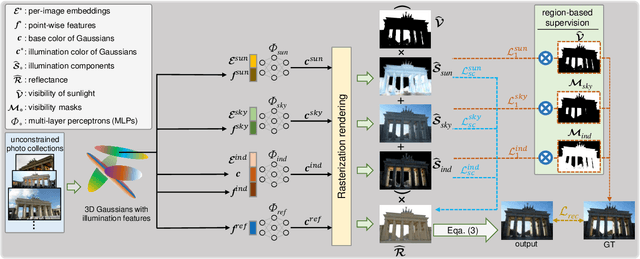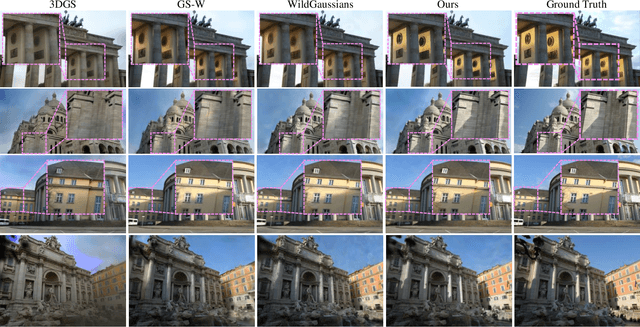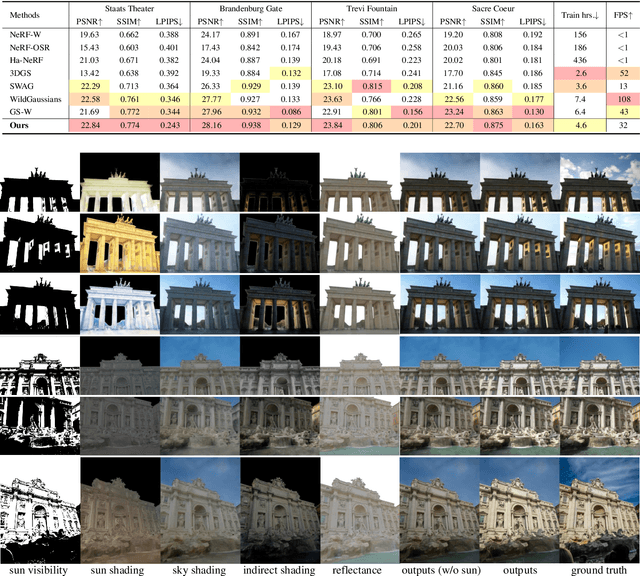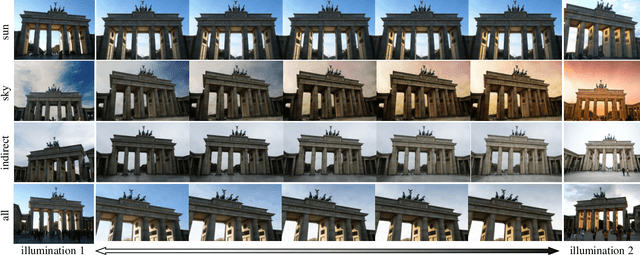Wei Huang
Marketing and Commercialization Center, JD.com
Optimal Real-time Communication in 6G Ultra-Massive V2X Mobile Networks
Oct 08, 2025Abstract:This paper introduces a novel cooperative vehicular communication algorithm tailored for future 6G ultra-massive vehicle-to-everything (V2X) networks leveraging integrated space-air-ground communication systems. Specifically, we address the challenge of real-time information exchange among rapidly moving vehicles. We demonstrate the existence of an upper bound on channel capacity given a fixed number of relays, and propose a low-complexity relay selection heuristic algorithm. Simulation results verify that our proposed algorithm achieves superior channel capacities compared to existing cooperative vehicular communication approaches.
LongLive: Real-time Interactive Long Video Generation
Sep 26, 2025Abstract:We present LongLive, a frame-level autoregressive (AR) framework for real-time and interactive long video generation. Long video generation presents challenges in both efficiency and quality. Diffusion and Diffusion-Forcing models can produce high-quality videos but suffer from low efficiency due to bidirectional attention. Causal attention AR models support KV caching for faster inference, but often degrade in quality on long videos due to memory challenges during long-video training. In addition, beyond static prompt-based generation, interactive capabilities, such as streaming prompt inputs, are critical for dynamic content creation, enabling users to guide narratives in real time. This interactive requirement significantly increases complexity, especially in ensuring visual consistency and semantic coherence during prompt transitions. To address these challenges, LongLive adopts a causal, frame-level AR design that integrates a KV-recache mechanism that refreshes cached states with new prompts for smooth, adherent switches; streaming long tuning to enable long video training and to align training and inference (train-long-test-long); and short window attention paired with a frame-level attention sink, shorten as frame sink, preserving long-range consistency while enabling faster generation. With these key designs, LongLive fine-tunes a 1.3B-parameter short-clip model to minute-long generation in just 32 GPU-days. At inference, LongLive sustains 20.7 FPS on a single NVIDIA H100, achieves strong performance on VBench in both short and long videos. LongLive supports up to 240-second videos on a single H100 GPU. LongLive further supports INT8-quantized inference with only marginal quality loss.
UnifiedVisual: A Framework for Constructing Unified Vision-Language Datasets
Sep 18, 2025Abstract:Unified vision large language models (VLLMs) have recently achieved impressive advancements in both multimodal understanding and generation, powering applications such as visual question answering and text-guided image synthesis. However, progress in unified VLLMs remains constrained by the lack of datasets that fully exploit the synergistic potential between these two core abilities. Existing datasets typically address understanding and generation in isolation, thereby limiting the performance of unified VLLMs. To bridge this critical gap, we introduce a novel dataset construction framework, UnifiedVisual, and present UnifiedVisual-240K, a high-quality dataset meticulously designed to facilitate mutual enhancement between multimodal understanding and generation. UnifiedVisual-240K seamlessly integrates diverse visual and textual inputs and outputs, enabling comprehensive cross-modal reasoning and precise text-to-image alignment. Our dataset encompasses a wide spectrum of tasks and data sources, ensuring rich diversity and addressing key shortcomings of prior resources. Extensive experiments demonstrate that models trained on UnifiedVisual-240K consistently achieve strong performance across a wide range of tasks. Notably, these models exhibit significant mutual reinforcement between multimodal understanding and generation, further validating the effectiveness of our framework and dataset. We believe UnifiedVisual represents a new growth point for advancing unified VLLMs and unlocking their full potential. Our code and datasets is available at https://github.com/fnlp-vision/UnifiedVisual.
Energy Detection over Composite $κ-μ$ Shadowed Fading Channels with Inverse Gaussian Distribution in Ultra mMTC Networks
Aug 29, 2025Abstract:This paper investigates the characteristics of energy detection (ED) over composite $\kappa$-$\mu$ shadowed fading channels in ultra machine-type communication (mMTC) networks. We have derived the closed-form expressions of the probability density function (PDF) of signal-to-noise ratio (SNR) based on the Inverse Gaussian (\emph{IG}) distribution. By adopting novel integration and mathematical transformation techniques, we derive a truncation-based closed-form expression for the average detection probability for the first time. It can be observed from our simulations that the number of propagation paths has a more pronounced effect on average detection probability compared to average SNR, which is in contrast to earlier studies that focus on device-to-device networks. It suggests that for 6G mMTC network design, we should consider enhancing transmitter-receiver placement and antenna alignment strategies, rather than relying solely on increasing the device-to-device average SNR.
Learning Primitive Embodied World Models: Towards Scalable Robotic Learning
Aug 28, 2025



Abstract:While video-generation-based embodied world models have gained increasing attention, their reliance on large-scale embodied interaction data remains a key bottleneck. The scarcity, difficulty of collection, and high dimensionality of embodied data fundamentally limit the alignment granularity between language and actions and exacerbate the challenge of long-horizon video generation--hindering generative models from achieving a "GPT moment" in the embodied domain. There is a naive observation: the diversity of embodied data far exceeds the relatively small space of possible primitive motions. Based on this insight, we propose a novel paradigm for world modeling--Primitive Embodied World Models (PEWM). By restricting video generation to fixed short horizons, our approach 1) enables fine-grained alignment between linguistic concepts and visual representations of robotic actions, 2) reduces learning complexity, 3) improves data efficiency in embodied data collection, and 4) decreases inference latency. By equipping with a modular Vision-Language Model (VLM) planner and a Start-Goal heatmap Guidance mechanism (SGG), PEWM further enables flexible closed-loop control and supports compositional generalization of primitive-level policies over extended, complex tasks. Our framework leverages the spatiotemporal vision priors in video models and the semantic awareness of VLMs to bridge the gap between fine-grained physical interaction and high-level reasoning, paving the way toward scalable, interpretable, and general-purpose embodied intelligence.
How Do LLM-Generated Texts Impact Term-Based Retrieval Models?
Aug 25, 2025



Abstract:As more content generated by large language models (LLMs) floods into the Internet, information retrieval (IR) systems now face the challenge of distinguishing and handling a blend of human-authored and machine-generated texts. Recent studies suggest that neural retrievers may exhibit a preferential inclination toward LLM-generated content, while classic term-based retrievers like BM25 tend to favor human-written documents. This paper investigates the influence of LLM-generated content on term-based retrieval models, which are valued for their efficiency and robust generalization across domains. Our linguistic analysis reveals that LLM-generated texts exhibit smoother high-frequency and steeper low-frequency Zipf slopes, higher term specificity, and greater document-level diversity. These traits are aligned with LLMs being trained to optimize reader experience through diverse and precise expressions. Our study further explores whether term-based retrieval models demonstrate source bias, concluding that these models prioritize documents whose term distributions closely correspond to those of the queries, rather than displaying an inherent source bias. This work provides a foundation for understanding and addressing potential biases in term-based IR systems managing mixed-source content.
GaRe: Relightable 3D Gaussian Splatting for Outdoor Scenes from Unconstrained Photo Collections
Jul 28, 2025



Abstract:We propose a 3D Gaussian splatting-based framework for outdoor relighting that leverages intrinsic image decomposition to precisely integrate sunlight, sky radiance, and indirect lighting from unconstrained photo collections. Unlike prior methods that compress the per-image global illumination into a single latent vector, our approach enables simultaneously diverse shading manipulation and the generation of dynamic shadow effects. This is achieved through three key innovations: (1) a residual-based sun visibility extraction method to accurately separate direct sunlight effects, (2) a region-based supervision framework with a structural consistency loss for physically interpretable and coherent illumination decomposition, and (3) a ray-tracing-based technique for realistic shadow simulation. Extensive experiments demonstrate that our framework synthesizes novel views with competitive fidelity against state-of-the-art relighting solutions and produces more natural and multifaceted illumination and shadow effects.
A Multimodal Data Fusion Generative Adversarial Network for Real Time Underwater Sound Speed Field Construction
Jul 16, 2025



Abstract:Sound speed profiles (SSPs) are essential parameters underwater that affects the propagation mode of underwater signals and has a critical impact on the energy efficiency of underwater acoustic communication and accuracy of underwater acoustic positioning. Traditionally, SSPs can be obtained by matching field processing (MFP), compressive sensing (CS), and deep learning (DL) methods. However, existing methods mainly rely on on-site underwater sonar observation data, which put forward strict requirements on the deployment of sonar observation systems. To achieve high-precision estimation of sound velocity distribution in a given sea area without on-site underwater data measurement, we propose a multi-modal data-fusion generative adversarial network model with residual attention block (MDF-RAGAN) for SSP construction. To improve the model's ability for capturing global spatial feature correlations, we embedded the attention mechanisms, and use residual modules for deeply capturing small disturbances in the deep ocean sound velocity distribution caused by changes of SST. Experimental results on real open dataset show that the proposed model outperforms other state-of-the-art methods, which achieves an accuracy with an error of less than 0.3m/s. Specifically, MDF-RAGAN not only outperforms convolutional neural network (CNN) and spatial interpolation (SITP) by nearly a factor of two, but also achieves about 65.8\% root mean square error (RMSE) reduction compared to mean profile, which fully reflects the enhancement of overall profile matching by multi-source fusion and cross-modal attention.
Scaling RL to Long Videos
Jul 10, 2025Abstract:We introduce a full-stack framework that scales up reasoning in vision-language models (VLMs) to long videos, leveraging reinforcement learning. We address the unique challenges of long video reasoning by integrating three critical components: (1) a large-scale dataset, LongVideo-Reason, comprising 52K long video QA pairs with high-quality reasoning annotations across diverse domains such as sports, games, and vlogs; (2) a two-stage training pipeline that extends VLMs with chain-of-thought supervised fine-tuning (CoT-SFT) and reinforcement learning (RL); and (3) a training infrastructure for long video RL, named Multi-modal Reinforcement Sequence Parallelism (MR-SP), which incorporates sequence parallelism and a vLLM-based engine tailored for long video, using cached video embeddings for efficient rollout and prefilling. In experiments, LongVILA-R1-7B achieves strong performance on long video QA benchmarks such as VideoMME. It also outperforms Video-R1-7B and even matches Gemini-1.5-Pro across temporal reasoning, goal and purpose reasoning, spatial reasoning, and plot reasoning on our LongVideo-Reason-eval benchmark. Notably, our MR-SP system achieves up to 2.1x speedup on long video RL training. LongVILA-R1 demonstrates consistent performance gains as the number of input video frames scales. LongVILA-R1 marks a firm step towards long video reasoning in VLMs. In addition, we release our training system for public availability that supports RL training on various modalities (video, text, and audio), various models (VILA and Qwen series), and even image and video generation models. On a single A100 node (8 GPUs), it supports RL training on hour-long videos (e.g., 3,600 frames / around 256k tokens).
Generalization Bound of Gradient Flow through Training Trajectory and Data-dependent Kernel
Jun 12, 2025Abstract:Gradient-based optimization methods have shown remarkable empirical success, yet their theoretical generalization properties remain only partially understood. In this paper, we establish a generalization bound for gradient flow that aligns with the classical Rademacher complexity bounds for kernel methods-specifically those based on the RKHS norm and kernel trace-through a data-dependent kernel called the loss path kernel (LPK). Unlike static kernels such as NTK, the LPK captures the entire training trajectory, adapting to both data and optimization dynamics, leading to tighter and more informative generalization guarantees. Moreover, the bound highlights how the norm of the training loss gradients along the optimization trajectory influences the final generalization performance. The key technical ingredients in our proof combine stability analysis of gradient flow with uniform convergence via Rademacher complexity. Our bound recovers existing kernel regression bounds for overparameterized neural networks and shows the feature learning capability of neural networks compared to kernel methods. Numerical experiments on real-world datasets validate that our bounds correlate well with the true generalization gap.
 Add to Chrome
Add to Chrome Add to Firefox
Add to Firefox Add to Edge
Add to Edge